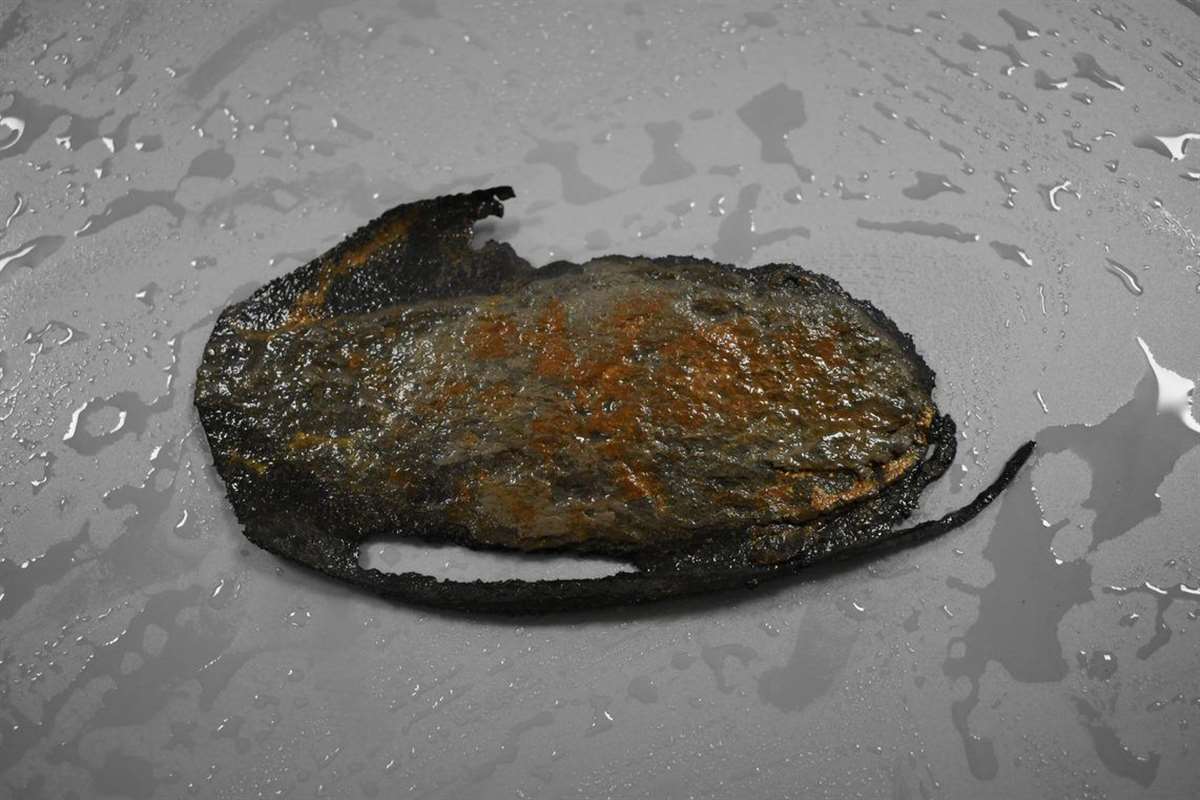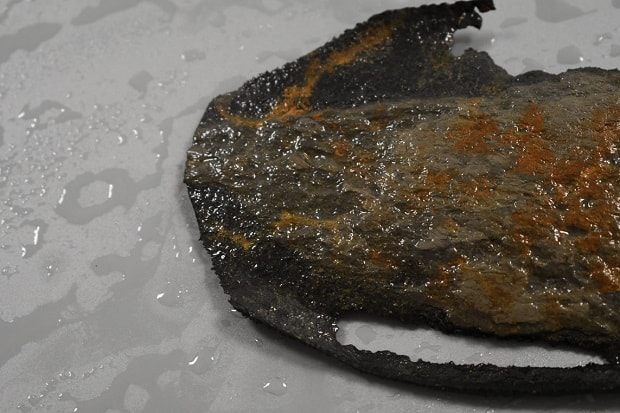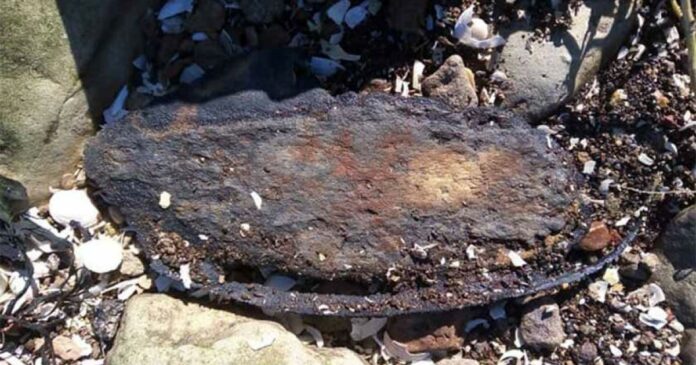In an astonishing discovery, a mudlarker exploring a riverbank in northern Kent has unearthed the oldest shoe ever found on UK soil. The decayed but still recognizable leather artifact has been carbon-dated to nearly 3,000 years old, specifically between 888 and 781 BC. This remarkable find sheds light on the ancient history of the British Isles and emphasizes the value of mudlarking as a method for uncovering historical treasures.
One of the Best Mudlarking Adventures Ever
The incredible discovery was made by Steve Tomlinson, an archaeologist from Ramsgate, Kent, who is affiliated with the Canterbury Archaeological Trust. On September 17, 2022, Tomlinson, along with his colleague Emily Brown, set out on a routine mudlarking expedition along the rivers of Kent. Mudlarking, the practice of searching riverbanks for artifacts, often yields fascinating finds, ranging from a few decades to several centuries old. Rivers that feed into the ocean, like the River Thames, are prime locations for mudlarking due to the tidal movements that reveal hidden objects.

The Discovery
During their expedition, Tomlinson and Brown spent hours scouring the shoreline, collecting various artifacts, including Roman pottery sherds and a small piece of Roman tesserae. As they neared the end of their exploration, with the tide turning, Tomlinson spotted a small, flattened piece of leather that resembled a shoe. Measuring approximately 15 centimeters (6 inches) in length, the weathered leather caught his trained eye.
“The day started well, and between us we had a good selection of finds including plenty of pottery sherds from the Roman period, and various small objects like a small piece of Roman tesserae,” Tomlinson recalled in an article in the Isle of Thanet News.
“We had been out for 3 hours scouring the shoreline, and the tide was turning when we hit the last leg of our day. As we made our way along the foreshore … I came across what looked like a very old shoe-like piece of leather washed up on the mud. It was around 15 centimeters [6 inches] in length.”
Initial Assessment and Carbon Dating
Tomlinson and Brown examined the leather shoe carefully, initially estimating it to be an early medieval artifact, potentially over 1,000 years old. Given Tomlinson’s previous experience, including the discovery of an Anglo-Saxon shoe in 2018, this seemed a plausible hypothesis. The Anglo-Saxon shoe he had found was dated to the 10th century AD, and he expected a similar age for this new find.

To confirm their suspicions, Tomlinson sent the shoe to the Scottish Universities Environmental Research Centre (SUERC) in East Kilbride, Scotland, for carbon dating. Five weeks later, the results astonished him. The shoe was not just 1,000 years old, but nearly 3,000 years old, dating back to the Late Bronze Age.
“The date they had given me was just astonishing,” Tomlinson said. “This could be not only the oldest shoe found in Kent, but in the British Isles itself, and a very high possibility that this is also the smallest Bronze Age shoe ever discovered in the world.”
Significance of the Discovery

This discovery has significant implications for our understanding of ancient British history. The shoe, now confirmed to be the most ancient ever recovered in the UK, surpasses the previous record held by a 2,000-year-old shoe found in a Somerset quarry in 2005. By modern standards, the shoe would be a child size 7, suitable for a toddler around 2-3 years old. This suggests that the child may have lost the shoe while playing near the riverbank, where it remained undisturbed for millennia.
Future Research
The ancient shoe is now slated for further analysis at the British Museum. Researchers aim to identify the animal from which the leather was sourced and will attempt to extract traces of human DNA. If successful, this could provide insights into the age, gender, and ethnic background of the child who wore the shoe in the first millennium BC. Such information could offer a unique glimpse into the lives of people living in the UK during the Late Bronze Age.
Conclusion
The discovery of a nearly 3,000-year-old shoe on a riverbank in northern Kent is a testament to the enduring value of mudlarking as a method for uncovering historical artifacts. This remarkable find not only sets a new record for the oldest shoe found in the UK but also opens up new avenues for research into the lives of ancient Britons. As scientists continue to analyze the shoe, we can look forward to learning more about the child who wore it and the world they lived in nearly three millennia ago. This discovery underscores the importance of preserving and studying our past, as each artifact holds the potential to unlock stories long forgotten.
